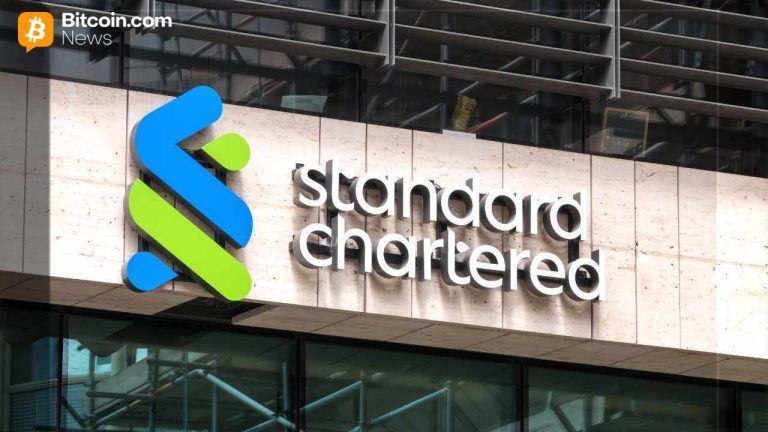Munis in their own lane as markets digest Fed cut
7 min read
Municipals were steady to weaker in spots Thursday, as U.S. Treasury yields rose five years and out and equities rallied.
The two-year muni-to-Treasury ratio Thursday was at 64%, the three-year at 66%, the five-year at 66%, the 10-year at 70% and the 30-year at 86%, according to Refinitiv Municipal Market Data’s 3 p.m. EST read. ICE Data Services had the two-year at 64%, the three-year at 65%, the five-year at 66%, the 10-year at 70% and the 30-year at 87% at 3:30 p.m.
Investors added $716 million to funds following $1.261 billion of inflows the week prior, according to LSEG Lipper. This marks 12 straight weeks of inflows.
After the Federal Reserve’s 50-basis-point cut, Ryan Swift, U.S. bond strategist at BCA Research said the projections for future cuts were the most important information for the bond market. “They tell us how much the Fed expects to ease during the next few years in the absence of recession,” he said.
Still, the market priced in “significantly more easing” than the Fed suggested, he added, “This means that a recession is required for long- duration positions to pay off on a six-to-12-month horizon.”
Before the meeting, it was a “coin flip” between a quarter- and a half-basis-point rate cut, said Steve Shutz, a portfolio manager and director of tax-exempt fixed income at Brown Advisory.
Shutz said Fed Chair Jerome Powell .wanted to dissuade the market from expecting similar sized cuts at every meeting going forward, with the Fed’s Summary of Economic Projections and fed futures market predicting two 25-basis-point cuts for the rest of the year and only 100 basis points of rate cuts for 2025.
While the
Retail investors have been slow to deploy funds, often selling at moments when rates have peaked and then are slow to get back, he said.
Many retail investors have likely waited for the Fed to start cutting rates before they felt the “all clear” to go back into bonds, Shutz said.
Supply has been heavy this year, sitting at $352.918 billion year-to-date, up 36.7%, according to LSEG.
While issuance slowed this week due to the FOMC meeting, it is set to surge next week, possibly reaching a weekly high of $20 billion.
Issuance will remain healthy ahead of Nov. 5 as issuers try to get ahead of any election-related volatility, Shutz said.
Due to the robust demand, supply is easily being absorbed, he noted.
“We’re now seeing some of these deals that are pricing at relatively attractive levels, the risk desk taking it down intentionally with the expectation they’ll be able to sell for higher levels some point in the future,” he said.
In the primary market Thursday, Jefferies priced for the Washington State Housing Finance Commission (A3///) $316.403 million of municipal social certificates, Series 2024-1 Class A, with 4.084s of 3/2040 at 4.358%.
BofA Securities priced for the Yuma Industrial Development Authority, Arizona, (/A/A/) $301.72 million of Yuma Regional Medical Center hospital revenue bonds, Series 2024A, with 5s of 8/2025 at 2.89%, 5s of 2029 at 2.79%, 5s of 2034 at 3.19%, 5s of 2039 at 3.46%, 5.25s of 2044 at 3.68% (Assured Guaranty-insured), 4s of 2049 at 4.12% (Assured Guaranty-insured), 5.25s of 2049 at 3.97%, 4s of 2054 at 4.18% (Assured Guaranty-insured) and 5.25s of 2054 at 4.05%, callable 8/1/2034.
Wells Fargo priced for the Baseline Metropolitan District No. 1, Colorado, a $158.28 million deal. The first tranche, $132.53 million of Assured Guaranty-insured special revenue refunding and improvement bonds, Series 2024A, (/AA//), saw 5s of 12/2024 at 3.24%, 5s of 2029 at 3.00%, 5s of 2034 at 3.43%, 5s of 2039 at 3.67%, 4s of 2046 at 4.10%, 5s of 2049 at 4.00% and 4.25s of 2054 at par, callable 12/1/2029.
The second tranche, $25.75 million of non-rated subordinate special revenue bonds, Series 2024B, saw 6.75s of 12/2054 price at par, callable 12/1/2029.
The Franklin County Convention Facilities Authority, Ohio, (Aa2/AA//) priced $137.495 million of lease revenue anticipation refunding bonds, Series 2024, with 5s of 12/2024 at 2.79%, 5s of 2029 at 2.57%, 5s of 2034 at 2.96%, 5s of 2039 at 3.25% and 5s of 2042 at 3.51%, callable 12/1/2034.
In the competitive market, the
AAA scales
Refinitiv MMD’s scale was little changed: The one-year was at 2.50% (unch) and 2.30% (unch) in two years. The five-year was at 2.31% (unch), the 10-year at 2.63% (unch) and the 30-year at 3.52% (+2) at 3 p.m.
The ICE AAA yield curve was cut two basis points: 2.51% (+2) in 2025 and 2.31% (+2) in 2026. The five-year was at 2.32% (+2), the 10-year was at 2.60% (+2) and the 30-year was at 3.30% (+2) at 4 p.m.
The S&P Global Market Intelligence municipal curve was little changed: The one-year was at 2.49% (unch) in 2025 and 2.32% (unch) in 2026. The five-year was at 2.33% (unch), the 10-year was at 2.58% (unch) and the 30-year yield was at 3.50% (+2) at 3 p.m.
Bloomberg BVAL was cut up to two basis points: 2.43% (unch) in 2025 and 2.38% (unch) in 2026. The five-year at 2.36% (unch), the 10-year at 2.60% (+1) and the 30-year at 3.49% (+2) at 4 p.m.
Treasuries were better.
The two-year UST was yielding 3.593% (-3), the three-year was at 3.479% (-1), the five-year at 3.492% (+1), the 10-year at 3.725% (+2), the 20-year at 4.114% (+3) and the 30-year at 4.061% (+4) at 3:30 p.m.
FOMC redux
After the Federal Reserve’s 50-basis-point cut, economists critiqued the move and what it means for bond investors.
While he expected a quarter-point cut, Chris Low, chief economist at FHN Financial, said the half-point move was the correct one. “Faster cuts early in the process should reinvigorate job growth and stabilize the unemployment rate faster,” he said. “Once that’s done, the Fed will refocus on inflation.”
The move “makes sense from a risk-management standpoint as the risk of a non-linear move lower in the labor market is higher than the risk of a reacceleration of inflation given progress on the price stability front,” said Jeff Schulze, head of economic and market strategy at ClearBridge Investments.
If the dot plot is correct about future cuts, he said, “the 10-year Treasury will likely move higher on the back of stronger [than] expected economic momentum.”
While agreeing with the FOMC’s projections of two more cuts this year, Luis Alvarado, Wells Fargo Investment Institute’s global fixed income strategist, said, “The FOMC is still priced for a more optimistic outcome regarding future Fed rate cuts in 2025. As the economic recovery resumes in the second half of 2025, we think it will prove difficult for inflation to decline further toward the Fed’s 2.0% inflation target.”
A soft landing should not be the base case, according to Peter Berezin, chief global strategist at BCA Research. “The Fed also cut rates by 100 bps in the months leading up to the 2001 and 2008/09 recessions,” he noted. “It was simply too little, too late back then. With unemployment now trending higher, this time may not be any different.”
A second wave of inflation remains a concern to Berezin. “A renewed overheated economy would preclude a recession over the coming months but would raise the odds of an even deeper recession down the road, as the Fed is eventually forced to slam on the brakes.”
By cutting 50 bps, the Fed admitted it should have cut in July, said George Catrambone, head of fixed income at DWS Group. “It also muddies future communications from the Fed, that they couldn’t better signal a 50 bp cut, when data actually came in stronger during the blackout period.”
Although inflation may not reaccelerate soon, he said, “giving preventive antibiotics to a patient that’s not sick has long-term consequences.”
A lone dissent “was a victory for Powell … and vindication for the market, but both should be careful what they wish for; if the Fed continues to cut aggressively it may find itself doing so in response to a hard landing,” Catrambone.
Manhattan Institute fellow Dan Katz calls the 50 bp cut “risky.” Despite “some marginal signs of softening” of the labor market, he said, “real economic output continues to grow at a healthy pace and inflation appears to be settling above the Fed’s stated target across a range of measures.”
The half-point move “is not without its problems,” agreed DWS U.S. economist Christian Scherrmann. “It at least feels a bit like a Fed that was actually pushed by the markets, not to mention the current political implications of a larger-than-usual move.”
“For the first time since the pandemic, this Fed made an aggressive action to be ahead of the curve by cutting rates to ensure the economy does not slip into recession,” Jay Hatfield, CEO at Infrastructure Capital Advisors, said. “The Fed is dominated by labor economists and the recent normalization of the labor market and increase in the unemployment rate motivated the committee to cut aggressively.”
“We view the Fed’s decision to start the easing cycle with a 50bp rate cut as more about making up for holding steady in July, rather than a signal of similarly jumbo-sized future moves,” said Andy Schneider, senior U.S. economist at BNP Paribas.
“The Fed’s 50bps cut demonstrated the power of financial conditions — and hence financial markets at present,” said Naomi Fink, global strategist at Nikko Asset Management. “Easy financial conditions, including plentiful appetite for investment in equities and other risk assets, have played a key role in extending the U.S. expansion cycle, which the Fed most likely did not wish to ignore.”
With the markets had already priced in a significant probability of a “50bp cut before the fact, it is possible that the Fed viewed such conditions as a good time to buy insurance — to cut 50bps while the markets were likely to absorb it well, in case conditions were not so amenable in the future,” she said.
Gary Siegel contributed to this story.







